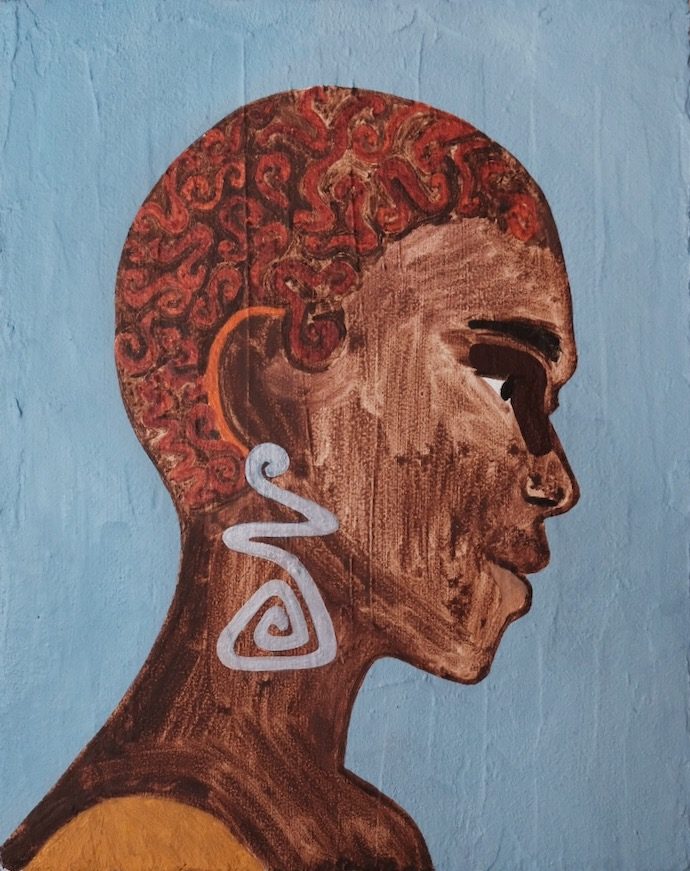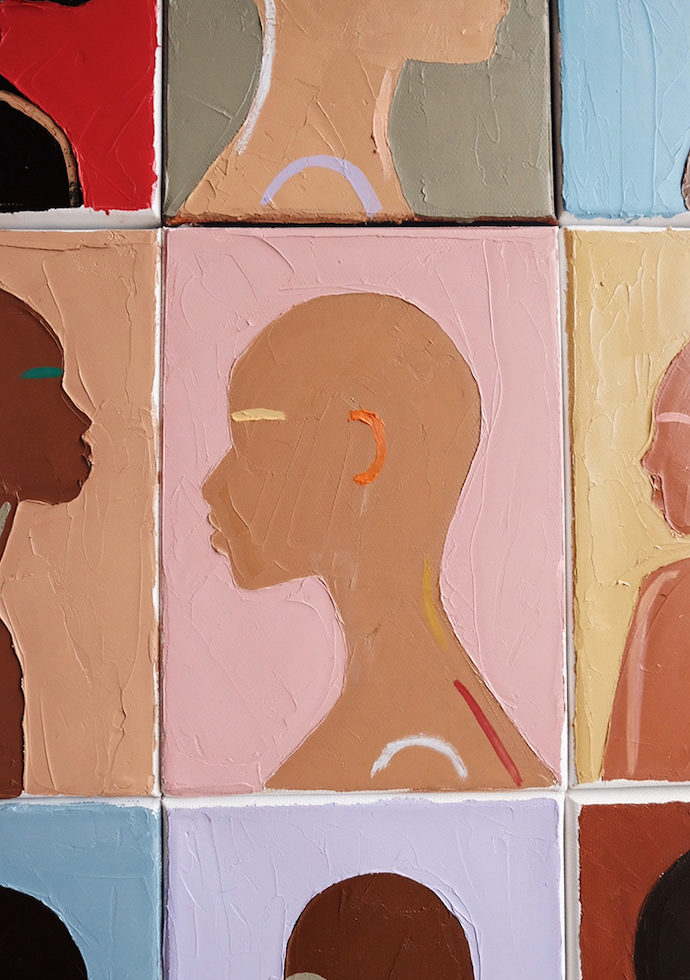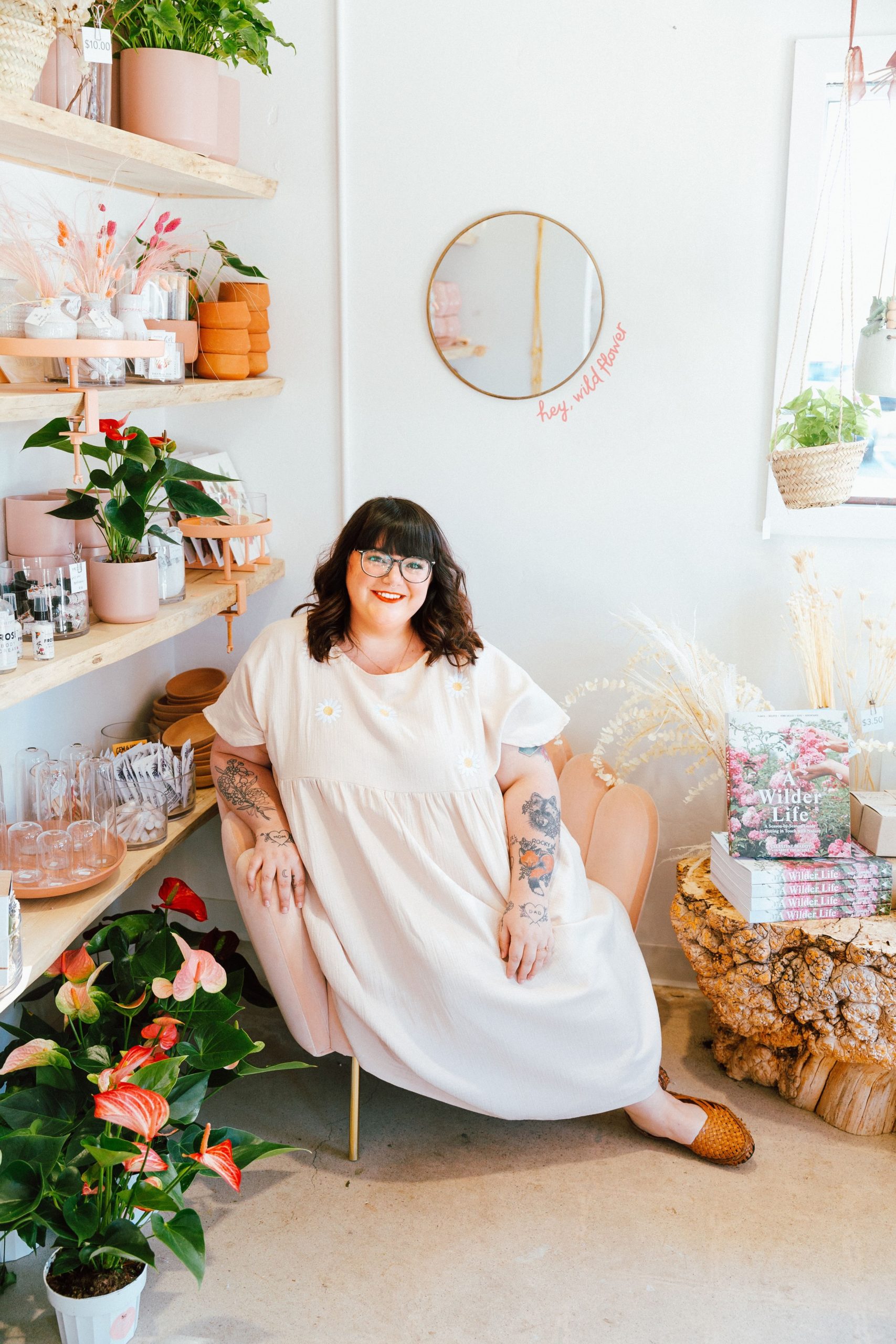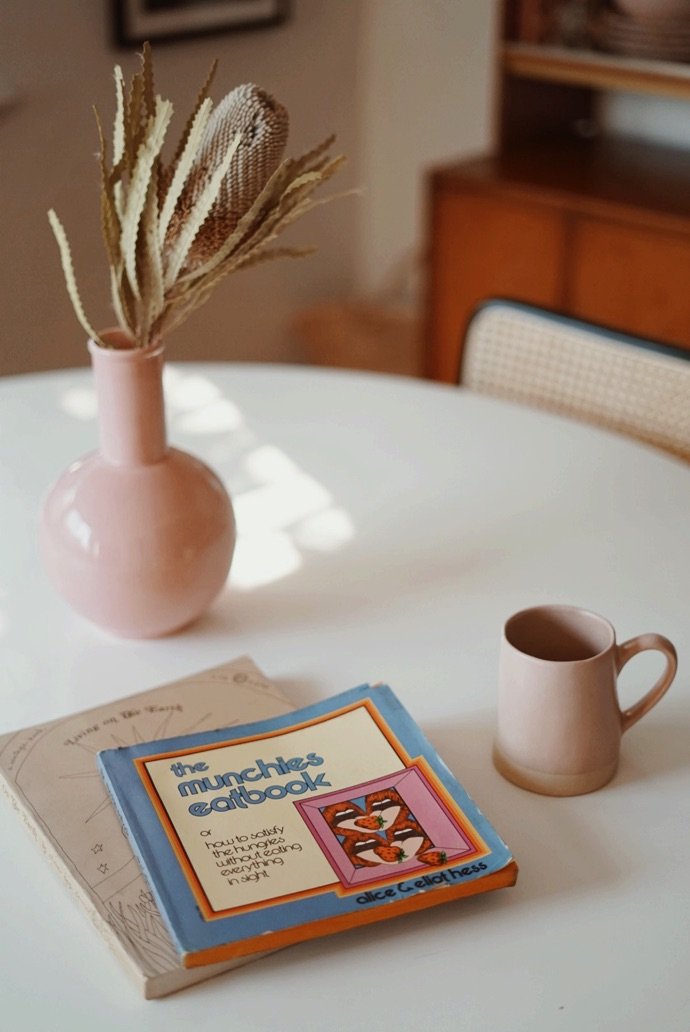Mafalda Vasconcelos is an artist I’ve followed on IG for awhile now. I find there to be so much emotion and storytelling in her work, and after interviewing her, I’m even more sure about the magic infused in each piece. Mafalda comes from a culturally rich background and was exposed to art from a very early age, thanks to her aesthete parents. The result? The exploration of identity through art. Mafalda explains her process and inspiration beautifully, so I’ll let her take it from here.

Occupation: Artist
Currently Residing: Melbourne, Australia
IG handle: @mmvce
Can you start by telling us a bit about yourself?
I was born in Johannesburg, South Africa but was raised in Mozambique. I am biracial, my dad was born in Portugal to a large Portuguese family while my mother and her family are native Mozambican. My background is in fashion design and I also have a master’s degree in entrepreneurship, but after a few years of working in fashion, I realized that I wanted to design more than clothes and accessories. I found that freedom in being an artist and have loved every second of the journey. The work I create is mainly through oil paintings, handmade drawings and digitally transformed pieces. I use art as a way of exploring memories and emotions and how these relate to identity.
I am now based in beautiful Melbourne, Australia where my partner is from and we are renovating our first home. We have lived in Melbourne for about 4 years and absolutely love it here.
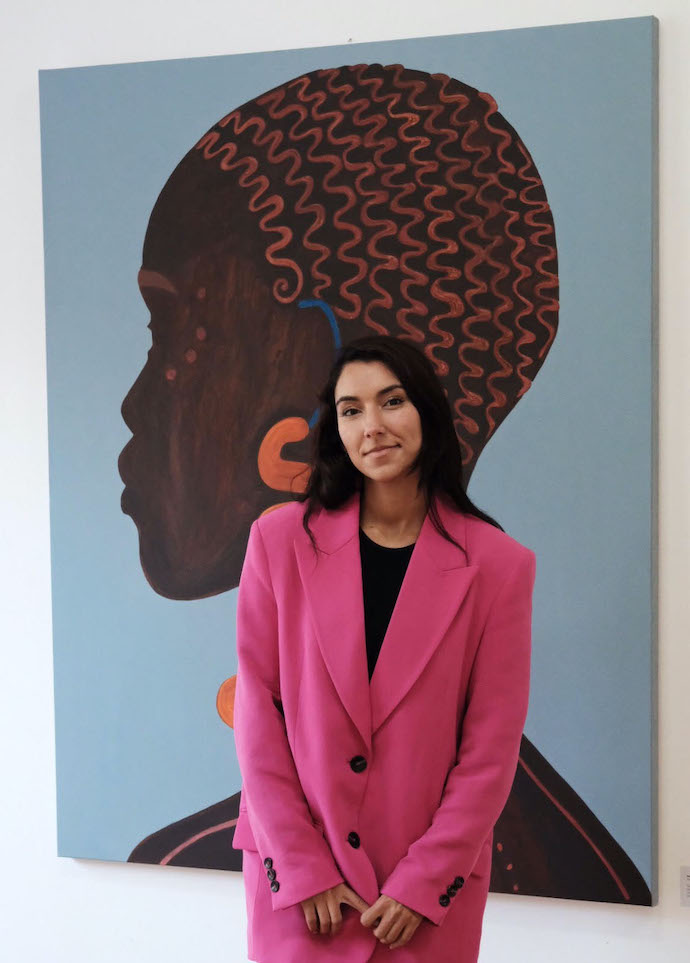
You grew up in Mozambique, how did that culture inspire your artistic journey?
My work is mostly inspired by my background growing up in Mozambique and being surrounded by all kinds of people of different ethnicities, but mostly mixed race or black family members. My parents are collectors of art and interesting objects, they cultivate a very special relationship with the objects they own, and it is something that has stuck with me. The colors in my work are mostly inspired by nature, flowers and landscape but also by capulana, the traditional Mozambican sarong-like fabric.
My mother and her family are from the Nharinga ethnic group from the Northern part of Mozambique but due to assimilation they lost any sort of knowledge on their culture and traditions. There are still some beliefs and rituals that they follow but most of it has been lost. I learned about this only a few years ago and it became a motivation and inspiration for me. I create portraits and drawings of female figures, trying to fill in the gaps of who my ancestors were, their beliefs, their folk tales, memories and consequently, inform my identity on these narratives.

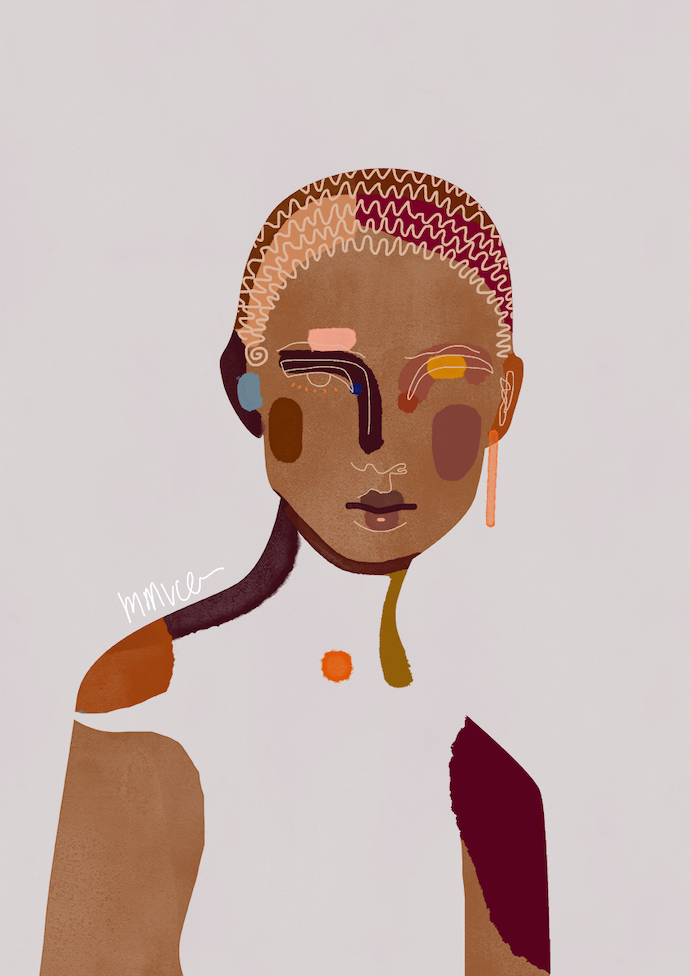
If you had to describe your art to someone who couldn’t see it, how would you describe it?
Aesthetically I would say: they are portraits and female figures broken down and minimized with symbolized features using layered geometric shapes and line drawings that represent dimension and motion. The patterns and symbolism are inspired by my research on African masks and fabrics patterns. I research books and anthropological studies extensively, to be able to give more depth to my work.
In terms of concept, my work is based on ritual masks. In different cultures throughout Mozambique, masks are used in rituals to represent ancestral spirits or souls and bring a certain energy to the land. I follow the same principle when I make portraits—the act of painting or drawing a head or face is an allegory to wearing that face or mask during a ritual.
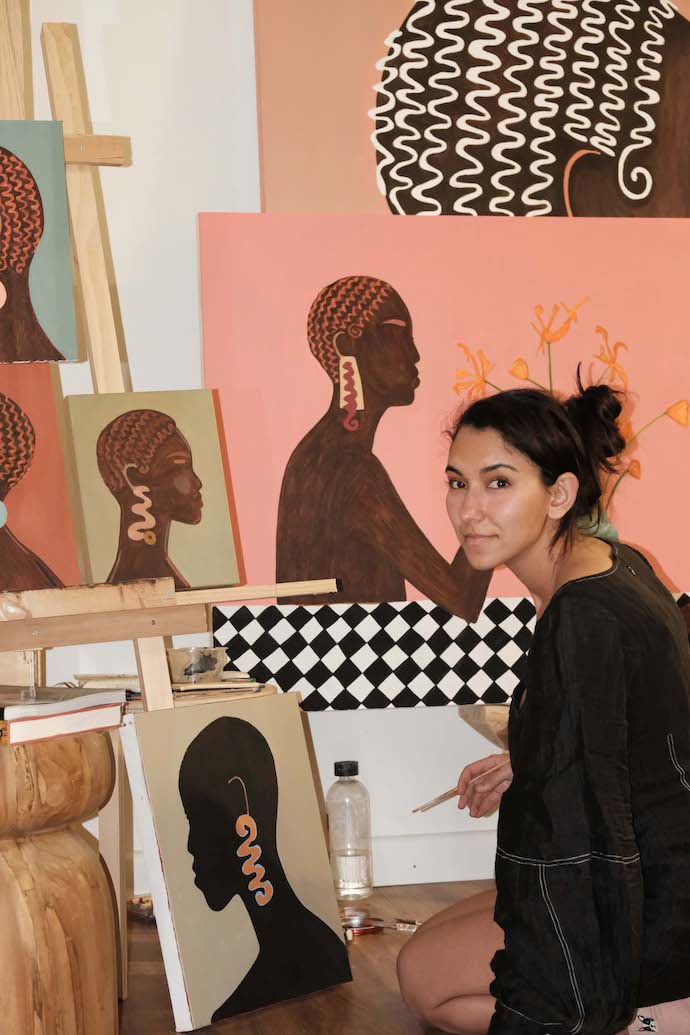
What’s the earliest memory you have of being artistic?
I remember in preschool, at 3 years old, I made a baby chicken out of a yarn pom-pom. It was cute and my dad kept it in his car as decoration. Other than the usual kids crafts at preschool, I was always drawing or making clothes for my dolls. Being the youngest child, I was always by myself, and doing creative things kept me busy and entertained.
What does creative energy mean to you?
Creative energy is essential to my identity. Creative energy is amusing, exciting and it gives me a unique sense of freedom. It is also a way in which I feel useful and purposeful. To me, creative energy is also part of my spirituality.
What do you do when you’re feeling creatively drained or uninspired?
The first step is to identify this creative block and try to identify the reason why it is happening. It is important not to force something if it isn’t flowing or working. If that happens, I take a step back and try to find something else I can focus my energy on and be productive, like admin work. If I am drained, I take the afternoon or the day off and do something I love like reading a book or surround myself with nature for some time. The trick is not to get too worried or anxious about it, it will pass.


What does a typical day look like for you?
A typical day is very chill. I wake up at 7 a.m., journal for a bit and then I get up and get ready for the day. After that, I make my coffee and my smoothie and reply to emails. I am lucky that I have a home studio and office that I love, it has removed a lot of anxiety out of my day as I didn’t like to commute. At 10 a.m., I go to the post office to drop off shipments, paintings or prints sold through my website or other platforms. After that, I go home and paint for the rest of the day or pack more orders. I usually stop working at 7 p.m. and I go for a walk with my dog. I live in Melbourne and we have been in lockdown since March. We are not allowed to have lives outside our homes, so I find meaning and purpose in my work.
Are you a homebody or do you like to explore?
A bit of both. I am an introvert and love spending time at home and by myself. But since I moved away from my home country 9 years ago, I got used to traveling back and forth to visit my family and have grown to love traveling and exploring. I also think it is important to get out of my comfort zone, and I can find inspiration in the most unexpected things.
Do you have any self-care rituals you swear by?
I have two. The first one is journaling first thing after you wake up, instead of grabbing my phone. I write anything that seems relevant, about how I am feeling, what I dreamed about and what I am thankful for. The second one is having a fresh juice or smoothie before coffee—with spinach, strawberries, mandarins, celery and carrots. It makes me feel healthier, which is always a plus.

Do you like to read? What are you currently reading?
I love reading and find a lot of inspiration through books. I am currently reading In Step with the Times: Mapiko Masquerades of Mozambique by Paolo Israel; it’s an anthropological study of the evolution of mapiko masquerades in Mozambique through the century. Mapiko are wooden masks striking and grotesque in aesthetic, that are worn by dancers during ritual masquerades or ritual dances. I find this theme fascinating.
Do you like to listen to anything when you work, or do you work in silence?
I work listening to music, it helps me to have rhythm and sometimes motivates me when I’m working.
What are some of your favorite podcasts or musical artists to listen to?
My favorite podcasts are Oprah’s SuperSoul Conversations, The Great Women Artists by Katy Hessel, The Michelle Obama Podcast, Jerry Gogosian and Girlboss Radio with Sophia Amoruso. My favorite musical artists are Fela Kuti, Gal Costa, Bonobo, Nicolas Jaar and Kaytranada.
What are five things you can’t live without?
- Painting/art
- Books to read and/or to look at with beautiful photos
- The beach (I learned in quarantine that I can’t live far from the beach)
- My dog Carrot
- My family
Are there any contemporary artists you’re particularly loving right now?
So many! Loving Toyin Ojih Odutola, Kerry James Marshall, Barry Yusufu, Garance Vallée, Blanca Miró Skoudy and Carlota Guerrero.
Favorite quote?
“If you think you are too small to change something, you should try to sleep in a room with a mosquito.” I actually don’t know who this is by, I think it’s an African saying. Always makes me chuckle.
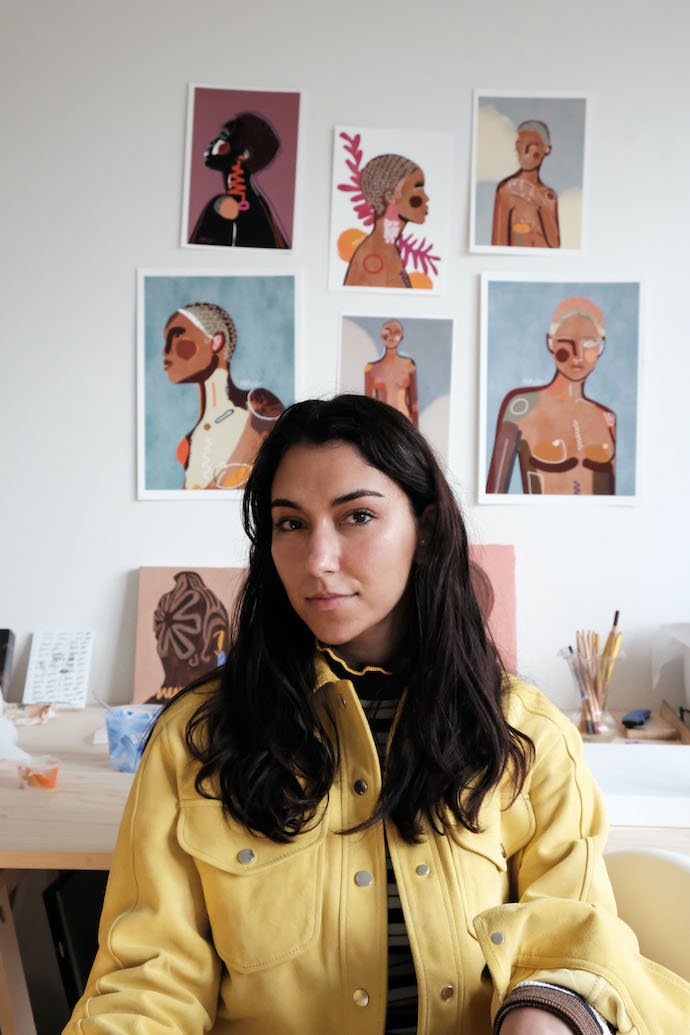
Thank you, Mafalda! Connect with her on IG – @mmvce


